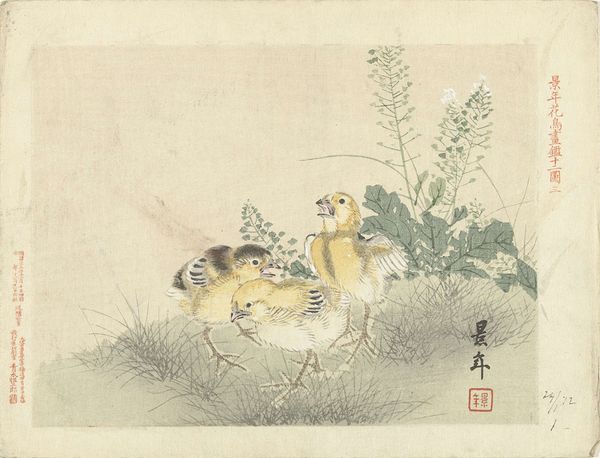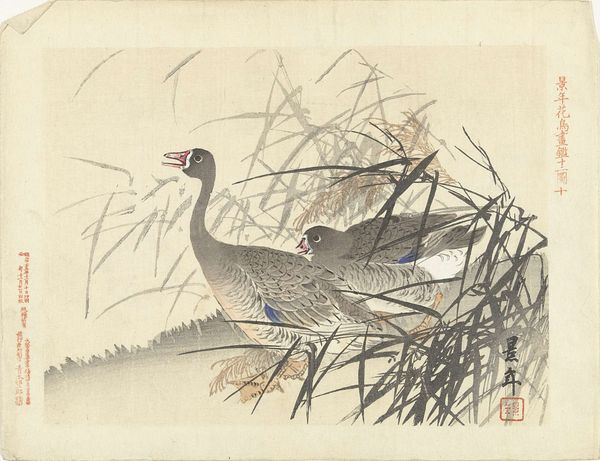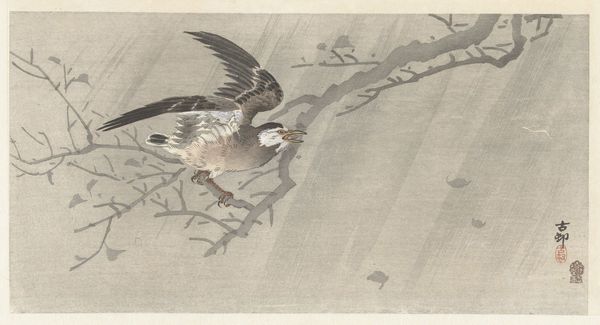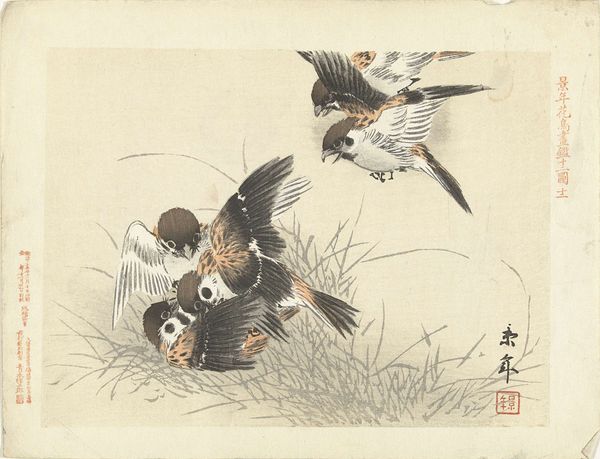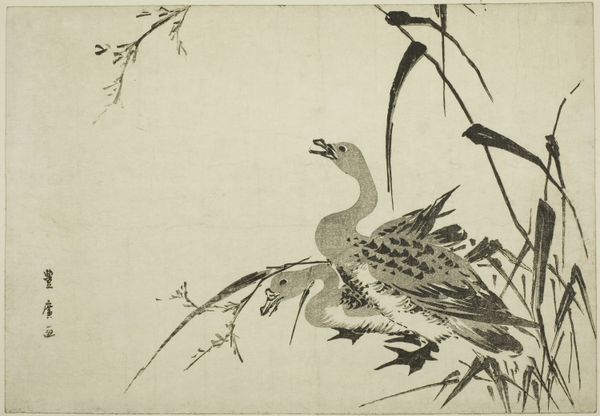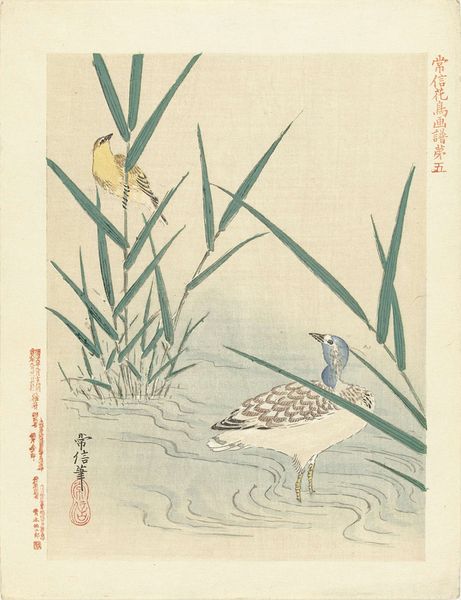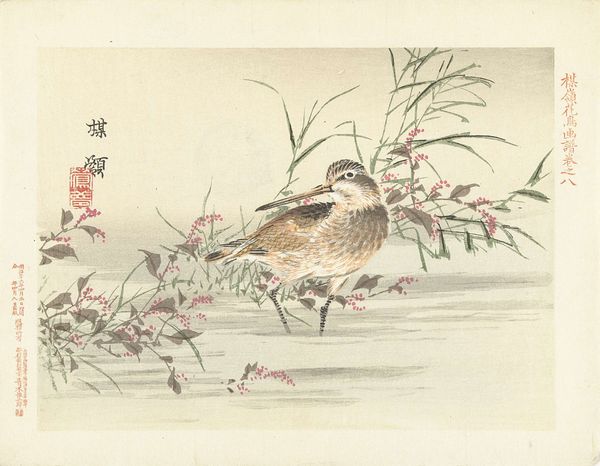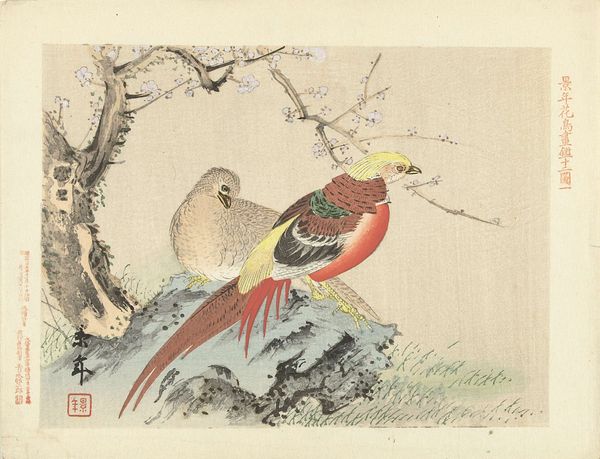
Dimensions: height 209 mm, width 275 mm
Copyright: Rijks Museum: Open Domain
Curator: Right, let's look closer at this print by Imao Keinen, dating to 1892. It’s called "Koppel eenden in de sneeuw," or "Pair of Ducks in the Snow," currently residing here at the Rijksmuseum. What’s your first reaction? Editor: It feels utterly peaceful. Those ducks look so content, huddled amidst the falling snow. It’s a gentle snowfall, almost dreamlike, a cozy little world just for them. Curator: The artist's choice of the woodblock print technique is interesting. Think about the labour involved; each color a separate block, the careful layering... This speaks to ukiyo-e traditions and the craft inherent in its production. It is not only about high art or capturing a beautiful scene, but about the system of art making in Japan at this time. Editor: You are right, I wonder what the market was like for these images. It makes me consider the journey this work took; perhaps it was treasured and displayed, or tucked away to be rediscovered years later, like now by you and I! Curator: Consider the relationship between humanity and nature reflected here. Ukiyo-e prints often showed this strong link; but also made them very affordable and consumed quickly; very fleeting impressions! Editor: It does seem like such a fragile, fleeting moment frozen in time! Like holding a snowflake. The simplicity invites us to focus on the essence of these creatures and the purity of winter itself. Curator: What’s also fascinating is considering the natural pigments used, and where the artist got these materials; there were shops that were more and less reputable that shaped the look and color palette that Keinen had access to. Editor: That gives me an entire new appreciation for how I see and interpret this, as I realize that art itself is born of the environment around us; the materials at our disposal as creative makers, natural or otherwise, dictate so much. What was made for a consumer becomes, here, an artifact for the ages! Curator: Precisely! It challenges our typical art history narrative, where it's usually just about individual genius and symbolic interpretation. Editor: Absolutely. I find that it encourages me to look deeper and think about art in a holistic way: considering everything around it, which you have helped unlock in a way that simply ‘observing’ could not do.
Comments
No comments
Be the first to comment and join the conversation on the ultimate creative platform.

